Always innovating: AI-enabled healthcare technology
Our expertise and AI solutions for healthcare help health plans solve cost, quality, member experience and reporting challenges.
Expert advice for driving health plan innovation
Discover how AI and other smart technologies advance solutions to key challenges for payers.
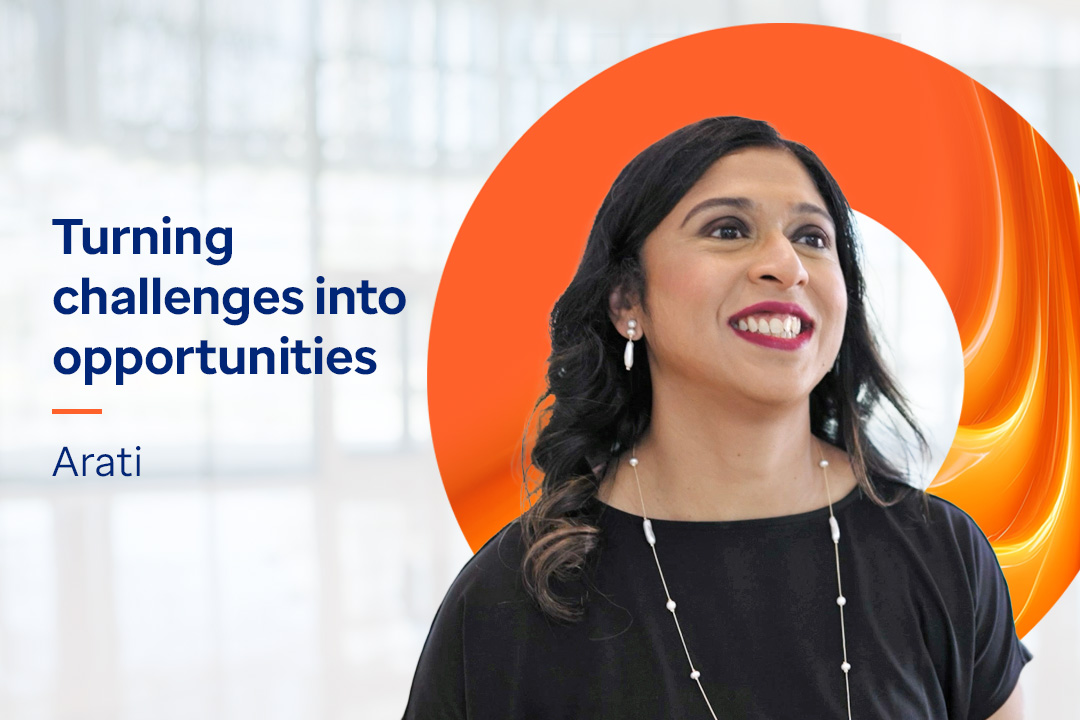
Article
Leveraging AI to identify clinical conditions
Discover how innovative healthcare technology helps to enhance the entire risk adjustment process, supporting efforts by health plans and providers to deliver better patient care.
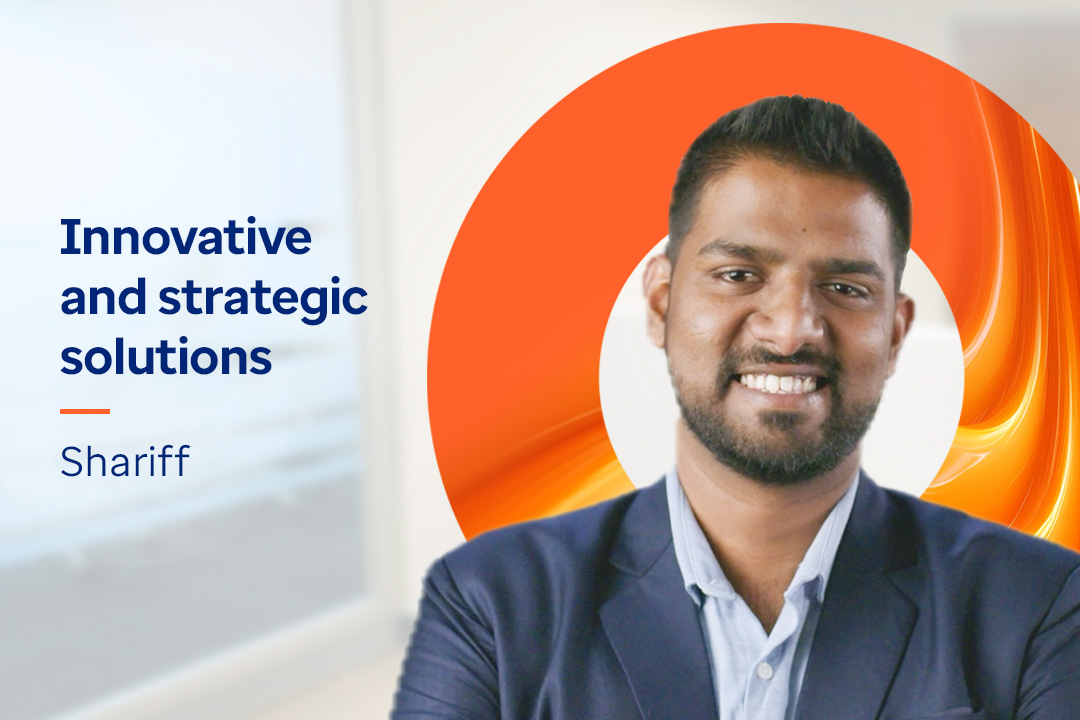
Article
Enhancing healthcare with a member-first digital approach
To lead the way in quality innovation, we prioritize a member-first approach that integrates advanced analytics and AI to enhance care and outcomes. Learn more about how innovative healthcare technology is helping to transform patient care.
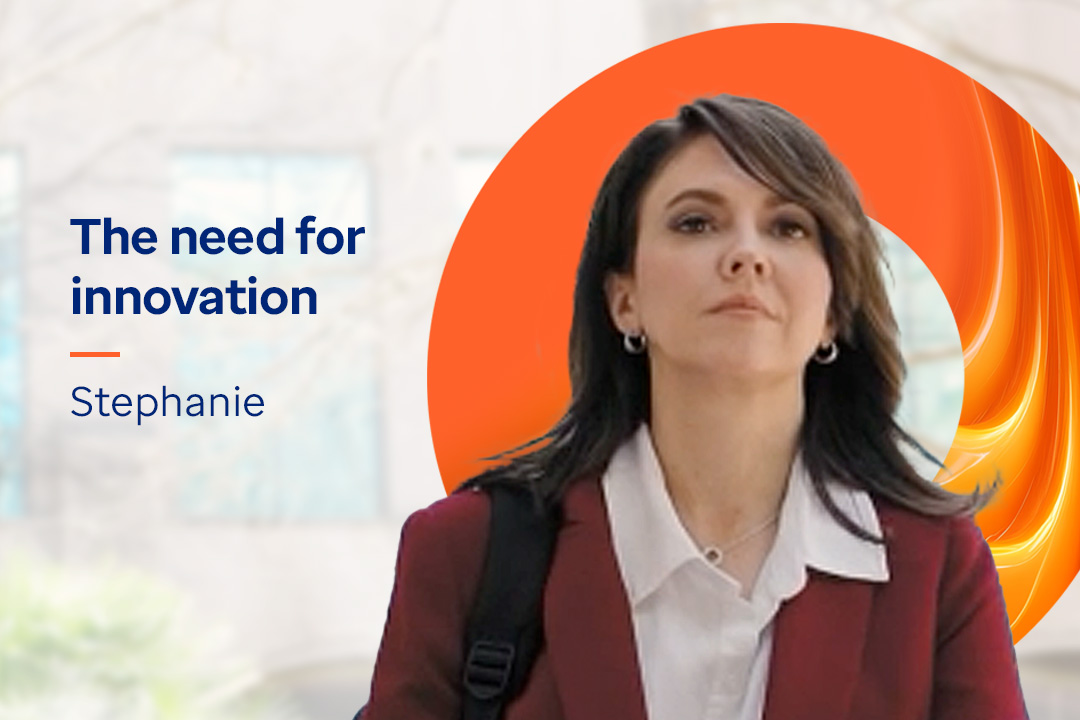
Article
The perfect blend: AI and human validation in condition capture
In the ever-evolving landscape of healthcare, the need for complete and accurate risk adjustment has never been more critical.
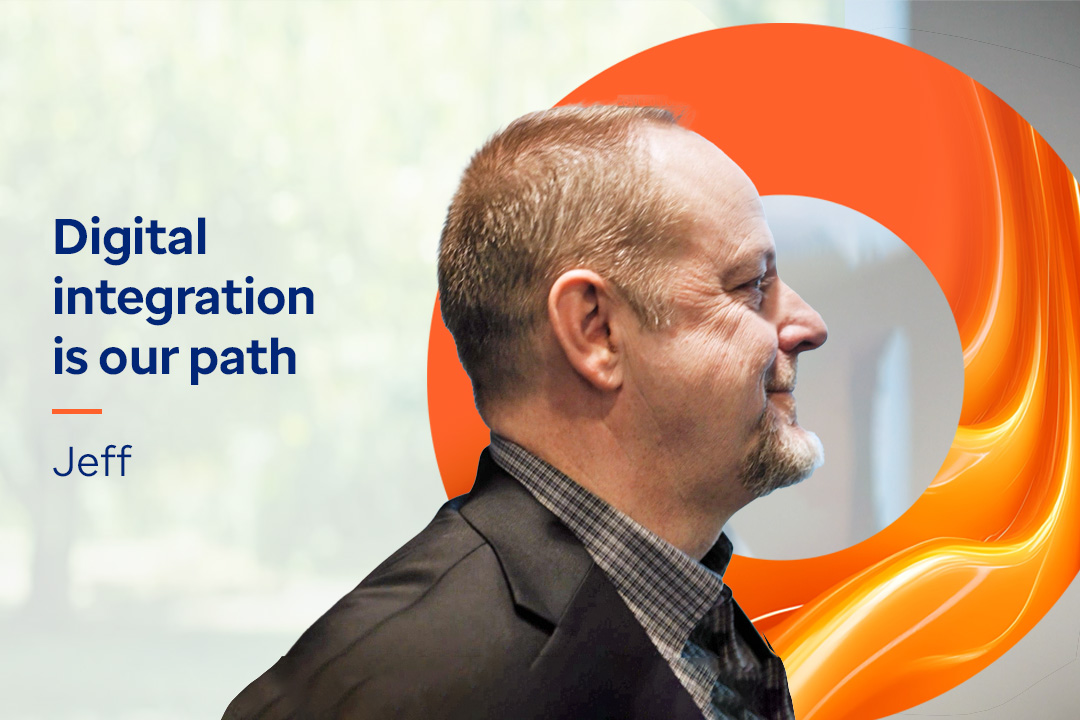
Article
Guide to achieving seamless digital integration
Optum offers digital solutions in 3 key areas: data acquisition, insight sharing and enhanced functionality.
Article
Member engagement: Advancing whole-person care
By collaborating with health plans and their members, Optum helps build a more cohesive, supportive system that prioritizes member needs.
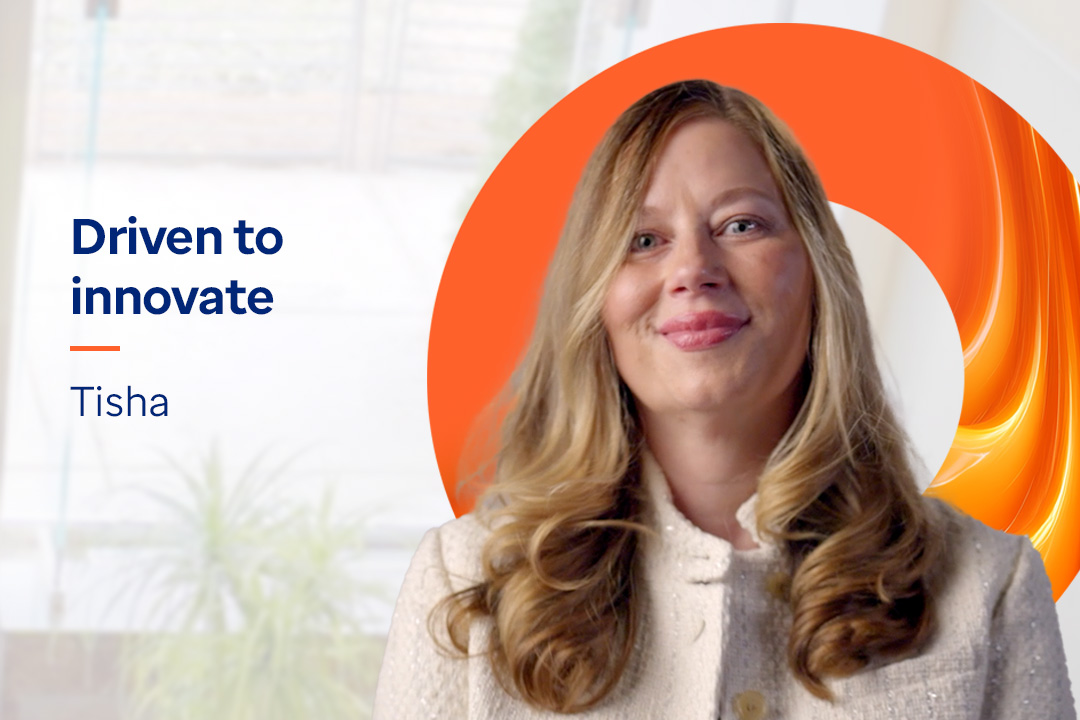
Article
Trends shaping the future of payment integrity
Explore the market trends that are driving payment integrity to a critical inflection point and what it means for health plans.
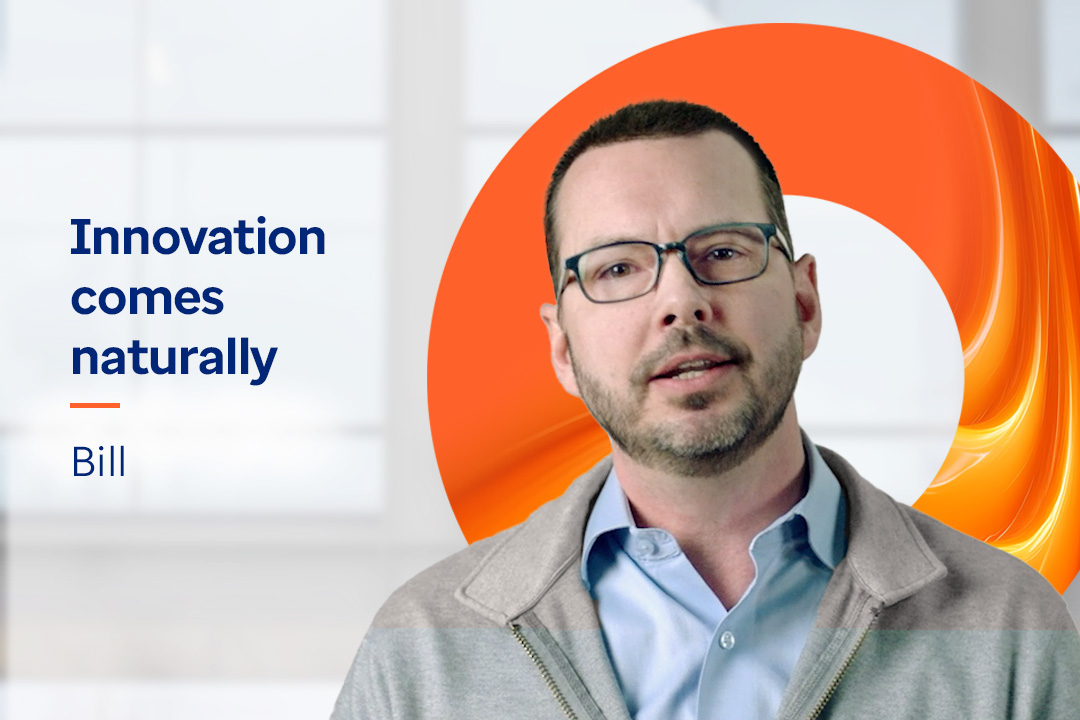
Article
Beyond the hype: Real AI use cases to drive payment accuracy
Explore real use cases for using AI to drive payment accuracy and the effective ways health plans are leveraging these emerging technologies.
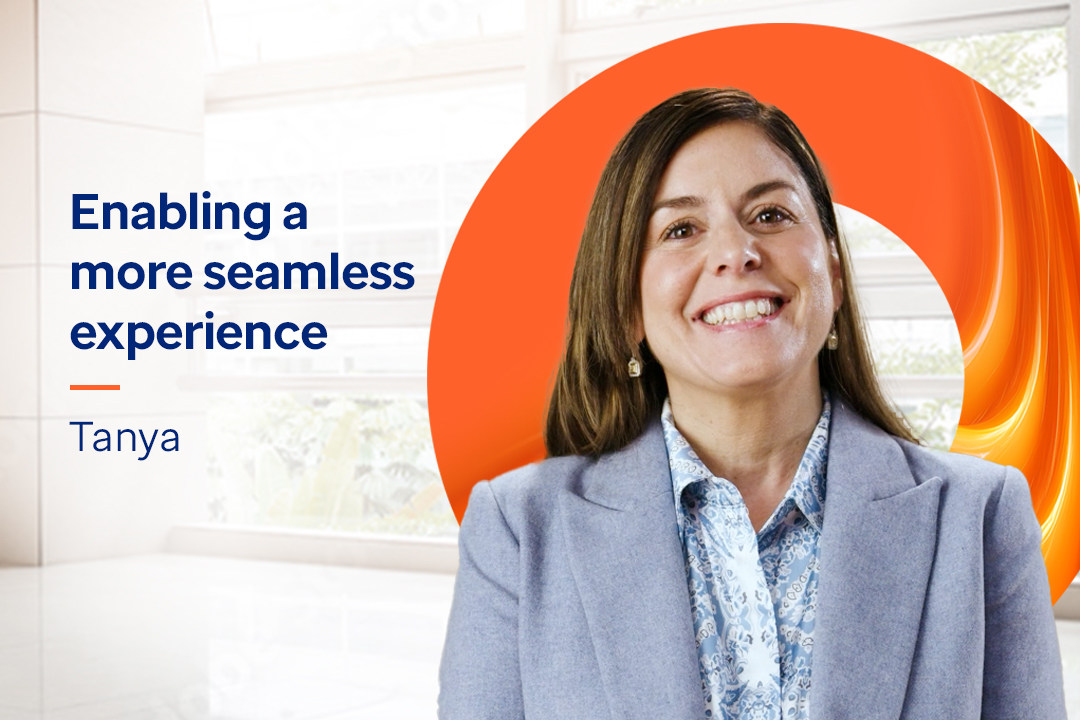
Creating a seamless durable medical equipment experience
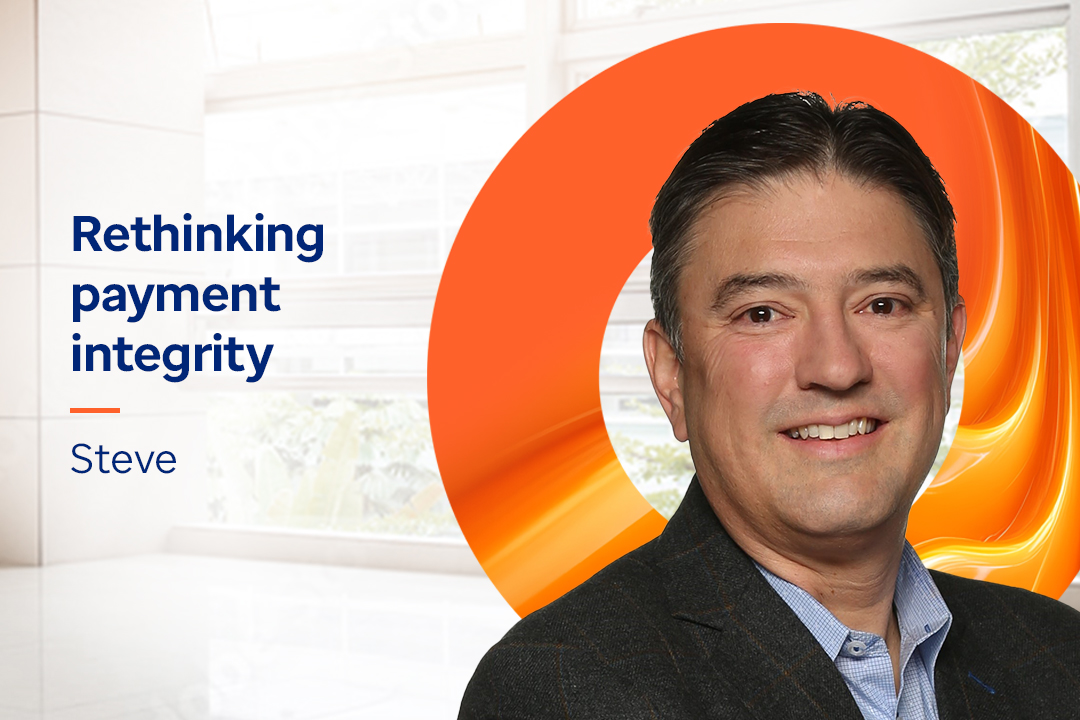
Article
Transforming payer operations with Steve Yurjevich
Optum payer market CEO Steve Yurjevich discusses opportunities to streamline operations and deliver more value across the health system.

Article
Leveraging AI to identify clinical conditions
Discover how innovative healthcare technology helps to enhance the entire risk adjustment process, supporting efforts by health plans and providers to deliver better patient care.

Article
Enhancing healthcare with a member-first digital approach
To lead the way in quality innovation, we prioritize a member-first approach that integrates advanced analytics and AI to enhance care and outcomes. Learn more about how innovative healthcare technology is helping to transform patient care.

Article
The perfect blend: AI and human validation in condition capture
In the ever-evolving landscape of healthcare, the need for complete and accurate risk adjustment has never been more critical.

Article
Guide to achieving seamless digital integration
Optum offers digital solutions in 3 key areas: data acquisition, insight sharing and enhanced functionality.
Article
Member engagement: Advancing whole-person care
By collaborating with health plans and their members, Optum helps build a more cohesive, supportive system that prioritizes member needs.

Article
Trends shaping the future of payment integrity
Explore the market trends that are driving payment integrity to a critical inflection point and what it means for health plans.

Article
Beyond the hype: Real AI use cases to drive payment accuracy
Explore real use cases for using AI to drive payment accuracy and the effective ways health plans are leveraging these emerging technologies.

Creating a seamless durable medical equipment experience

Article
Transforming payer operations with Steve Yurjevich
Optum payer market CEO Steve Yurjevich discusses opportunities to streamline operations and deliver more value across the health system.
Innovative healthcare technology insights
This video series offers our Optum expertise and explores AI-enabled healthcare solutions.
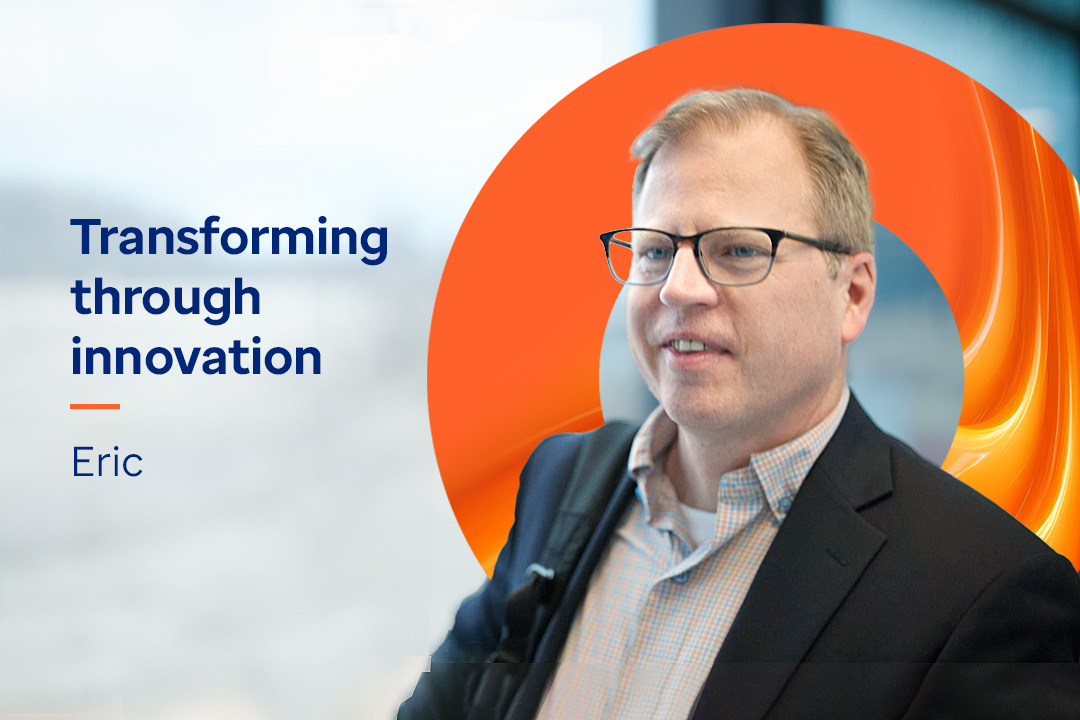
Video
Driving innovation in risk adjustment
By bringing together leading expertise with advanced AI and machine learning capabilities, Optum advances innovative healthcare technology.
[MUSIC PLAYING IN THE BACKGROUND THROUGHOUT THE VIDEO]
[VIDEO, Eric Haseman walking through the lobby and hallways of an office building]
ERIC HASEMAN: The industry is accelerating, in terms of the needs, both of our customers and the broader marketplace. So it is forcing us to think differently about everything that we're doing.
[VIDEO, Eric Haseman walking onto a studio sound stage, sitting down on a stool to film his talk]
[Text On Screen Ð Eric Haseman, Senior Vice President and General. Manager, Risk and Quality]
My name is Eric Haseman. I'm responsible for risk adjustment product at Optum.
[VIDEO, production using a clapperboard to start filming Eric Haseman]
Risk adjustment is important for many reasons. How we ensure accurate and complete picture of a patient's health, but also how that information is then used to be able to improve how care is delivered and improve health overall. That's why it's important. At Optum, we've made intentional investments, both in terms of our capabilities, investing in those capabilities, if you will, but also investing in top talent, bringing in new experience, expertise to be able to accelerate our product roadmaps, kind of think differently about how our products work, how we collaborate with customers. The orchestration of all of this is key. Whether it's individual patients, individual providers, practices, entire health systems, it's crucial that we get that right. There's so much impact that we can have, both for our customers and for the industry overall. It's just incredibly exciting for me and for the team as a whole. I know that to be true.
[Text On Screen Ð Always innovating]
[ANIMATION, an orange ÒOÓ of the Optum logo, with wavy, fire-like animation displayed on it]
[LOGO: Optum]

Video
Improving outcomes with digital integration
Optum facilitates delivery of reliable evidence providers need to help improve patient care.
[Jaunty, pizzicato strings music plays in the background.]
On-screen text: Digital integration is our path.
[A suited arm carrying a briefcase is moving towards a blurred building.]
JEFF DUMCUM: Health plans can sit on top of a lot of data.
[We see Jeff DumcumÕs back as he walks towards the Optum building. An American flag flutters in the wind next to an Optum flag, on flagpoles.]
JEFF: We can harness that data to give insights, but we need to share them with the clinician.
[A hand opens the lid of a laptop. The screen transitions and we see the open laptop twice in a split screen, on the right Jeff is sitting behind the laptop.]
JEFF: Digital integration is our path to take those insights we have as Optum and give them to the provider at the time when they're sitting down across from a patient.
[Other boxes take up different sections of the split screen, showing the laptop and Jeff from different angles. The screen transitions and we see Jeff, in profile, walking slowly past a window. Jeff walks up a staircase and another split screen appears, showing him entering the filming space and sitting down on a leather-covered stool.]
JEFF: My name is Jeff Dumcum. I work in Optum Insights Risk and Quality product division.
[Two more split screen boxes appear, showing Jeff behind a sound clapper board and smiling, respectively. The screen transitions across to reveal a full screen image of Jeff, wearing a suit with no tie and jeans, speaking towards the camera.]
On-screen text: Jeff Dumcum. Product Vice President, Risk and Quality.
JEFF: When it comes to digital integration, Optum is unique in its scale and comprehensive approach.
[Jeff sits with his right leg folded on top of the left and talks to camera as he gestures with his hands.]
JEFF: Optum has strengths in various areas.
[Various shots of Jeff as he sits, talking to camera.]
JEFF: Optum is very strong at driving clinical insights, more connectivity with different EMRs than anybody else in the market.
[Jeff counts on his fingers as he lists the strengths, and gestures, expressively with his hands.]
JEFF: So not only do we have more insights, we can get those insights into the hands of the providersÊbecause our health system is fragmented.
[We see Jeff from two different angles in a split screen, before returning to the full screen, centered shot.]
JEFF: So, something that may have been treated by another provider, they may not be aware of, and the ability for us to share that is number one.
[We see a variety of shots of Jeff, including a close-up, as he continues talking and gesturing.]
JEFF: The second thing is, after they've seen the patient, we want to get clinical information back,Êand we want that to be as smooth and as efficient as possible, so we're not wasting a provider's time on administrative activities.
[We once again see an image of Jeff sitting on the stool, with elements of the filming space visible behind him, including the background screen.]
JEFF: And lastly, as we present the gaps, some gaps are best managed by a primary care physician and others are best routed to the specialist, so we can create logic of right information to the right provider.
[We see Jeff in another split screen, before returning to a full screen shot of him in front of the screen.]
JEFF: I'm excited because I can see the future as those insights move beyond risk adjustment and quality into other aspects of care, that we will continue to have a very significant impact on the health care system.
[An Orange letter O, with lighter shades of orange swirling across it like flowing paint, begins to transition on-screen from the edges, settling on the right-hand side.]
On-screen text: Always innovating.
[The swirling letter O becomes smaller and stops swirling, taking its place as the letter O of the Optum logo.]
On-screen text: Optum.

Video
Leveraging AI to identify clinical conditions
Learn how innovative healthcare technology informs an end-to-end risk adjustment workflow to help health plans and providers improve patient care.
[MUSIC PLAYING IN THE BACKGROUND THROUGHOUT THE VIDEO]
[Text On Screen Ð Turning challenges into possibilities]
[VIDEO, Arati Swadi walking through an office, through the lobby and down the stairs, transitioning to computer screens displaying data, and a person working on a laptop]
ARATI SWADI: I get to talk to the customers firsthand, understand the market firsthand, and then drive those problems into solution, by working with amazing technology and amazing teams, to bring it to fruition.
[VIDEO, Arati Sadi walking to a chair set up in front of a white screen, with the production team using a clapboard before shooting the scene]
I'm Arati Swadi. I work for Optum.
[Text On Screen Ð Arati Swadi, Vice President, Retrospective and Prospective Services]
I'm part of the risk adjustment and quality product management.
[ARATI SWADI SPEAKING ON SCREEN]
I conceptualize, drive product delivery in our product department. The healthcare industry has seen two main shifts. One is around the integrated payer and provider model, which is through the value-based care model, and the technological advancement. That is the shift that we are going to continue to see in the next decade. Optum is really at the forefront of technology innovations, through AI and EMR interoperability. We are connected to over 29,000 providers, which is unprecedented in the industry. That level of scale really helps us drive efficiency, that we have proven to be that trusted partner, with the payers and the providers, to provide these outcomes and results that are aligned with the customers over the period of time and will continue to do so through the innovations and the products that we bring in the future as well. Seeing it to fruition, through the results and the goals that we achieve for our customers, is very gratifying.
[Text On Screen Ð Every challenge is an opportunity for innovation, Always innovating]
[ANIMATION, the Optum ÒOÓ with the words ÒAlways innovatingÓ displayed inside of it]
[LOGO, Optum]

Video
Identify up to 5% more suspected clinical conditions
As part of our innovation in risk adjustment, AI can help identify clinical indications often missed by traditional methods, providing a more accurate picture of patient health.
[MUSIC PLAYING IN THE BACKGROUND THROUGHOUT THE VIDEO]
[Text on Screen – The need for innovation]
[VIDEO, Stephanie Gardner walking outdoors, down the street, over a bridge, transitioning to a split screen of a computer displaying data]
STEPHANIE GARDNER: Working in risk adjustment really excites me because it connects my passion for chronic condition management. It takes it out of the problem-focused nature of health care. Why are you here today? What are your symptoms? And really allows that full condition assessment.
[VIDEO, Stephanie Gardener walking onto a studio sound stage, sitting in front of a white screen, with production clap board preparing for start of shooting video]
[Text on Screen – Stephanie Gardener, Vice President, Market Solutions]
I'm Stephanie Gardner. I work with Optum's Risk Adjustment Market Solutions. With the introduction of V28, the market need for innovation is more critical than ever but ensuring full and accurate diagnosis coding is more complex. And that's just because there's a tremendous amount of data that's just overwhelming payers and providers. AI is helpful in that it really helps us go beyond some of the traditional programs that focused on structured data and allows us to dig into unstructured data that might exist in things like chart notes and to do the most comprehensive assessment possible for that patient. We couple the AI algorithm with certified coders, with clinical expertise, who review and validate the results of the AI. And by bringing those two together, we can see a 5 percent increase in net new suspects. And that's 5 percent of conditions that are existing that are impacting the treatment of these patients but were previously going undetected. It's really exciting to see innovative approaches to risk adjustment programs that can make a big difference in our healthcare payers, providers, and patients.
[Text on Screen – Innovation that makes a difference, Always innovating]
[LOGO, Optum]

Video
Quality innovation: A member-first approach to healthcare excellence
Learn how Optum uses a member-first digital approach, advanced analytics and AI to enhance quality for clients and health plan members.
[Music playing in the background throughout the video]
[A person walking, a close up of their legs and feet walking]
Text on Screen – Innovative and strategic solutions
[Video montage of Muthiulla Shariff Baseer walking to the Optum office building, people in a data center looking at a computer screen with data, Muthiulla Shariff Baseer setting up his laptop]
MUTHIULLA SHARIFF BASEER VOICEOVER: Having the ability to process data digitally allows the patients to get care in a very proactive manner.
[Muthiulla Shariff Baseer in front of a white screen, with a clapboard, positioning himself in front and preparing to talk and posing for the camera]
My name is Muthiulla Shariff Baseer and I lead the Quality and Member Engagement product team here at Optum.
Text on Screen – Muthiulla Shariff Baseer, Vice President of Product, Quality and Member Engagement
[MUTHIULLA SHARIFF BASEER SPEAKING ON SCREEN]
One of the biggest trends in quality happening is the digital transition. This digital trend has really enhanced and evolved the way we think, the way we act, and the way we provide to our members. The way we're doing this is taking an advanced analytic approach, providing insights, and catering to the needs of the member, leveraging AI. This is how Optum is a one-stop shop for quality. We at Optum have a unique partnership with NCQA as a part of their early adopter program. This allows us to go to market quicker and take advantage of our CQL engine to produce gaps in care quicker than anybody else in the market today. Optum's unique position, in terms of where we are placed, helps us understand what the market trends are, what the customer needs are, and come up with innovative and strategic solutions to help and make a difference in the members' life. That is one of the key reasons why I am excited to be here.
[Optum “O” animated, with words inside the “O”: Always innovating]
Text on Screen – Making a difference in members’ lives, Always innovating
[LOGO, Optum]

Video
Unlocking new possibilities in risk adjustment
Optum helps health plans improve risk adjustment performance by using data, AI and smart tech to enhance accuracy, efficiency and integration.
[MUSIC PLAYING IN THE BACKGROUND THROUGHOUT THE VIDEO]
[VIDEO, Eric Haseman walking through the lobby and hallways of an office building]
ERIC HASEMAN: The industry is accelerating, in terms of the needs, both of our customers and the broader marketplace. So it is forcing us to think differently about everything that we're doing.
[VIDEO, Eric Haseman walking onto a studio sound stage, sitting down on a stool to film his talk]
[Text On Screen Ð Eric Haseman, Senior Vice President and General. Manager, Risk and Quality]
My name is Eric Haseman. I'm responsible for risk adjustment product at Optum.
[VIDEO, production using a clapperboard to start filming Eric Haseman]
Risk adjustment is important for many reasons. How we ensure accurate and complete picture of a patient's health, but also how that information is then used to be able to improve how care is delivered and improve health overall. That's why it's important. At Optum, we've made intentional investments, both in terms of our capabilities, investing in those capabilities, if you will, but also investing in top talent, bringing in new experience, expertise to be able to accelerate our product roadmaps, kind of think differently about how our products work, how we collaborate with customers. The orchestration of all of this is key. Whether it's individual patients, individual providers, practices, entire health systems, it's crucial that we get that right. There's so much impact that we can have, both for our customers and for the industry overall. It's just incredibly exciting for me and for the team as a whole. I know that to be true.
[Text On Screen Ð Always innovating]
[ANIMATION, an orange ÒOÓ of the Optum logo, with wavy, fire-like animation displayed on it]
[LOGO: Optum]

Video
Leading the way in payment integrity
Imagine a world where every claim is paid accurately and on time, the first time. Optum is working hand-in-hand with health plans and providers to achieve this vision.
[MUSIC PLAYING IN THE BACKGROUND THROUGHOUT THE VIDEO]
[Text on Screen – Driven to innovate]
[VIDEO, Tisha Holden walking through an office lobby, with split screens of computers displaying data]
TISHA HOLDEN: Imagine a world where all claims are paid accurately, the first time, on time. That's a vision we have that not only drives what we do every day, but it's our mission.
[VIDEO, Tisha Holden taking a seat in front of a white screen, with a production clap board indicating the start of shooting a video]
I am Tisha Holden, and I am market president within Optum Insight for the West Region.
[TISHA HOLDEN SPEAKING ON SCREEN]
[Text on Screen – Tisha Holden, Payer Market President, West Region]
Providers often don't have the information they need or the connectivity they need to bill and code claims accurately. And traditional payment integrity interventions can create administrative burden and frustration for both providers and health plans. Optum is making this better by combining best-in-class solutions, like comprehensive payment integrity, with advanced technology, artificial intelligence, and expertise from thousands of clinicians to make the process even better. We are advancing payment integrity into the provider workflow, further streamlining the process, creating a real-time payment integrity intervention at the point of service. The key is transparency, which facilitates more communication, more efficiency, and effectiveness in the process. Members, providers, and health plans all benefit. Working with this incredible team, that wake up every day with the passion and the energy to make the health care system better for everyone, is what drives me every single day. We began this process and this journey over 25 years ago, and it's been so exciting to watch this team innovate, not only build the foundation that we're all working through today, but also build the future.
[Text on Screen – Making the health care system better for everyone, Always innovating]
[LOGO, Optum]
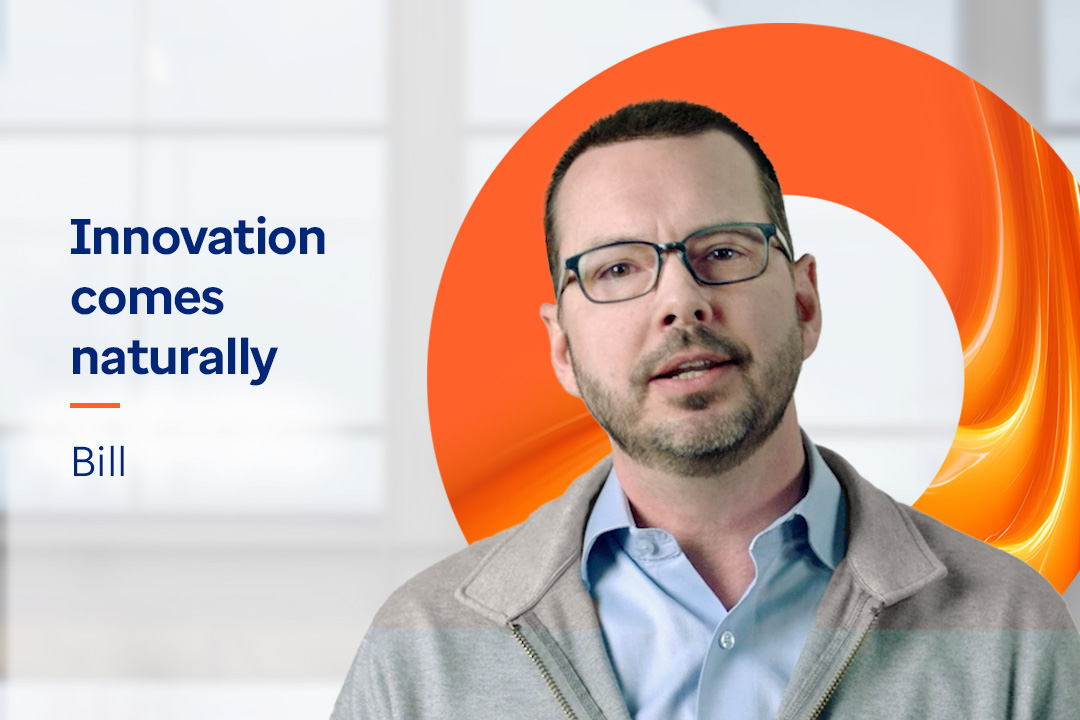
Video
Leveraging AI to help improve payment integrity
In a world where technology is advancing at a rapid pace, health plans are looking for examples of how to use AI to help solve their business needs. See how Optum is paving the way forward.
[MUSIC PLAYING IN THE BACKGROUND THROUGHOUT THE VIDEO]
[VIDEO, Bill Maly walking through an office skywalk, with a split screen of computer screen displaying, “Health Activation Index” and an individual looking at data on a computer screen]
[Text on Screen – Innovation comes naturally]
BILL MALY VOICEOVER: Health plans are really trying to identify examples of how AI can help them solve their business needs. Ultimately, if you can find the root cause and the problem, the innovation comes naturally.
[VIDEO, Bill Maly taking a seat in front of a white screen on a production set]
I'm Bill Maly. I work in our Payment Integrity business here at Optum.
[VIDEO, production clapboard being snapped]
[BILL MALY SPEAKING ON SCREEN]
[Text on Screen – Bill Maly, Senior Vice President, Payment Integrity]
The interesting thing about technology and the value that we find is when you can bring in both that health care expertise, together with the advanced technology, to build very powerful solutions. Sometimes a standard rule or an edit will do the job. But there are areas of payment integrity where AI can add value, and that's really around areas of driving operational efficiencies and reducing provider abrasion.
[VIDEO, a close up of Bill Maly’s hands, as he speaks] Optum has been using AI in our solutions for more than a decade. Currently, we evaluate millions of claims per day running through our AI algorithms and models.
[VIDEO, a split screen of Bill Maly speaking from different angles]
Over those many years, billions of claims have been evaluated, and that has allowed us to improve the accuracy of our detection, detecting claims that, ultimately, edits and rules can't. Another great opportunity for AI is really in workflow prioritization. So once we identify a claim that needs human review, we prioritize that through our AI models to route the claims to the most experienced reviewers. So seeing what this technology is capable of, and knowing some of the problems that our health plans are facing, really gets me excited about what we can bring.
[MUSIC GETTING LOUDER]
[Text on Screen – Building powerful solutions, Always innovating]
[ANIMATION, an orange Optum “O” with the words, “Always innovating”]
[LOGO, Optum]
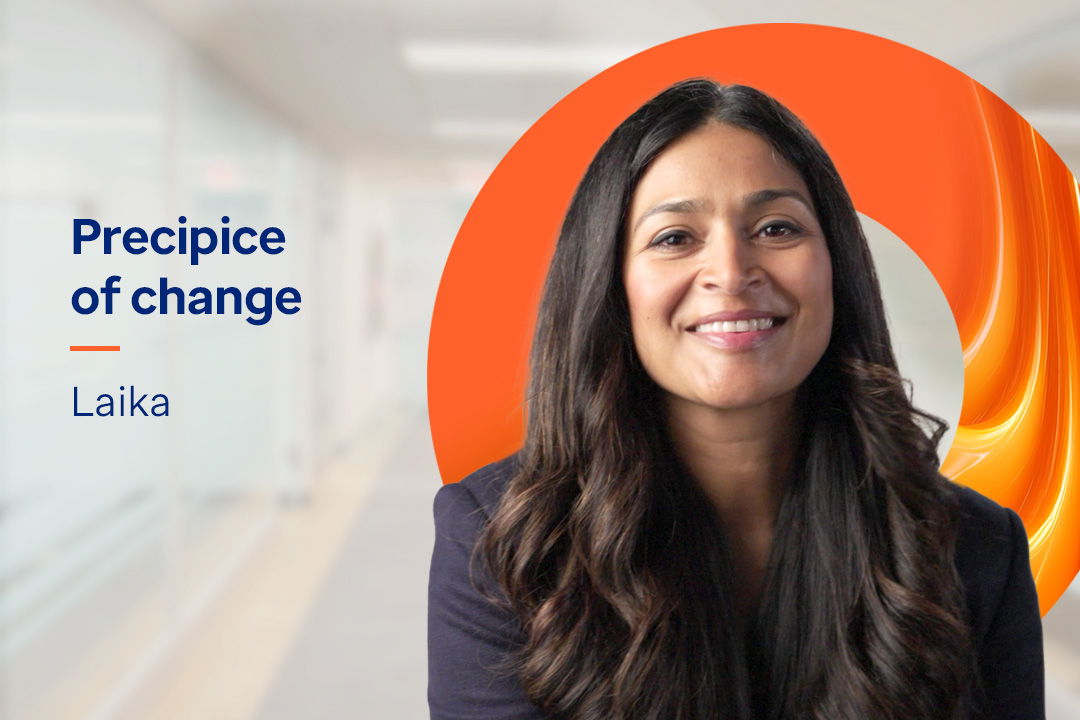
Video
Streamlining payment accuracy with machine learning
Provider contracts contain essential information for accurate reimbursement. Learn how Optum technology extracts and digitizes this data, helping to make it easily accessible.
[CLASSICAL CELLO MUSIC]
[The corridor of an office with transparent and translucent walls on either side of it that look into meeting rooms. Laika Kayani walks towards the camera from the far end of the corridor.]
On-screen text: Precipice of change.
[Close up of her legs as she walks.]
LAIKA KAYANI: I love what I'm doing here at Optum,
[She gives her back to an open floor with office cubicles against a windowed wall and walks to exit.]
because we are at a precipice of
[She walks alongside a front desk, above which the Optum logo hangs on the wall.]
change in the healthcare industry.
[Close-up of her face in profile as she walks.]
Technology is evolving.
We have large language models
[In the foreground, a screen shows stock market information. Laika walks in a room with chairs and tables in the background.]
and AI really changing the
[Split screen with Laika walking on the left and on the right, two people in front of a laptop with an orange screen, against a bigger screen with a blue background, dots arranged in a circle in the middle and on the left-hand side, the outline of the shape of a country.]
way healthcare gets delivered
[Close-up of the face of Laika in profile, as she keeps walking.]
and how decisions get made.
[Split screen with Laika’s face in profile on the left and on the right, her sitting down on a chair on the interview set, against a white backdrop. The left screen splits in two halves. On the top half, a sound clapper in front of her face and on the bottom half a close-up of her face, as she smiles.]
My name is Lika Kayani
[Laika from the waist up.]
and I lead the product team
[The orange “O” from the Optum logo appears at the bottom of the screen in the center, sliding left to reveal a white text box.]
On-screen text: Laika Kayani – Vice President, Payment Integrity Product.
for Payment Integrity services.
[Close-up of Laika’s face.]
The problem with contracts within health plans today is contracts are: one, in different formats.
[Laika from the waist up.]
Two, they're in disparate systems, and being able to extract
[Split screen with Laika on the left sitting on a chair on the set, and a close-up of her face on the right.]
information for the sake of paying a claim correctly is very difficult.
[Laika from the waist up.]
I'm really excited about what Optum’s doing.
[Close-up of Laika’s face.]
Optum is helping payers digitize their contracts using large language models
[Laika from the waist up.]
and extracting meaningful information
[Close-up of Laika’s face.]
into machine readable format.
[Laika sitting on a chair on the set, against the white backdrop.]
We're also using digitized contracts to build
[Laika from the waist up.]
AI-enabled augmentation tools for our reviewers to help them
[Close-up of Laika’s face.]
in their decision making when they're reviewing contract-based error claims.
[Laika from the waist up.]
The digitized information
[Split screen with close-up of Laika’s face on the left and her on the right, sitting on a chair on the set, against the white backdrop.]
helps reviewers drive more accurate decision making and pay claims more accurately.
[Laika sitting on a chair on the set, against the white backdrop.]
We are at a point in our healthcare journey
[Laika from the waist up.]
where change
[Close-up of Laika’s face.]
is happening pretty rapidly,
[Laika from the waist up.]
and to be able to influence where healthcare is going is really powerful, so I'm excited to be on this journey.
[The “O” of the Optum logo closes in from the edge of the screen, coming to rest on the right-hand side. Text appears in the middle of the “O.”]
On-screen text: Always innovating.
[Text appears to the left of the “O.”]
On-screen text: Changing the way healthcare gets delivered.
[All the text disappears, the “O” shrinks and forms the Optum logo.]
On-screen text: Optum.
[JAUNTY PIZZICATO MUSIC]
[MUSIC ENDS]
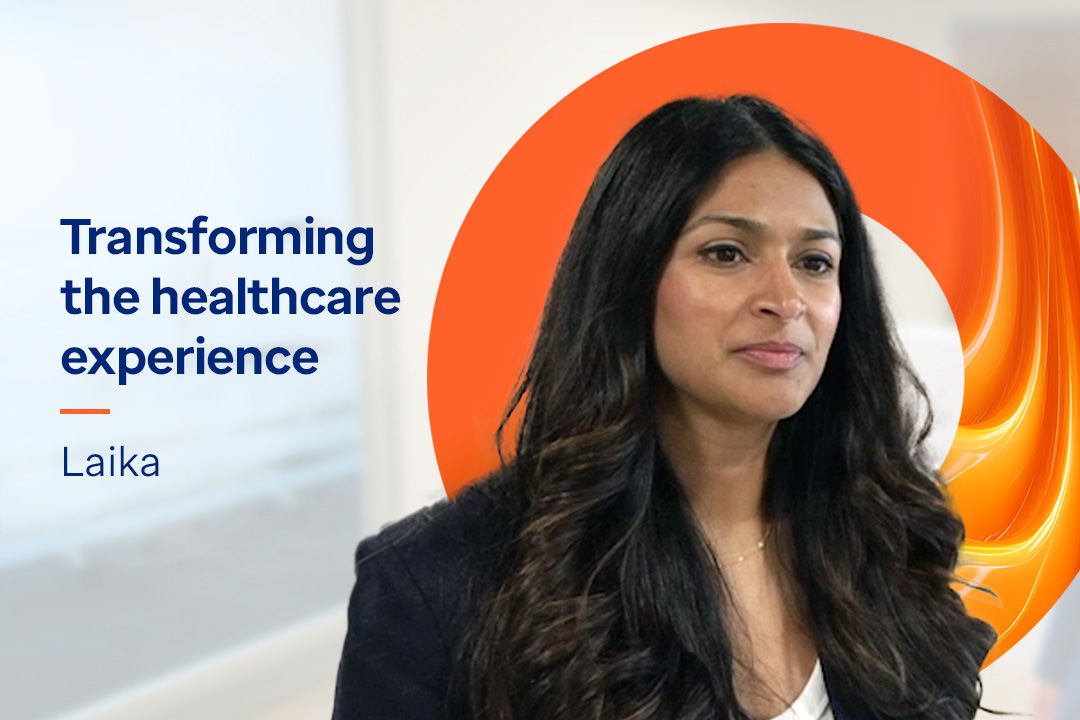
Video
Transforming the healthcare experience
Real-time coordination of benefits solutions from Optum help providers see a comprehensive view of patient coverage and facilitate submission of claims to the correct payer the first time.
[MUSIC PLAYING IN THE BACKGROUND THROUGHOUT THE VIDEO]
[Text on Screen – Innovation is in our DNA]
[VIDEO, Laika Kayani walking through an Optum office building, with split screens of computers displaying data]
LAIKA KAYANI VOICEOVER: I love that I could make an impact in this industry. I want to leave health care better for my children and better than I found it.
[VIDEO, Laika Kayani taking a seat in front of a white screen, with a production clap board indicating the start of shooting a video]
[Text on Screen – Laika Kayani, Vice President, Payment Integrity Product]
I'm Laika Kayani and I lead product for payment integrity services at Optum. There are tens of millions of people across the US who have multiple sources of coverage. However, when a patient shows up to the provider office, they present one form of coverage, but the provider does not have a holistic view of their coverage end to end. This leads to incorrect payments of roughly 150 million claims a year. It also leads to delays in payments by about 270 days. What's great about what Optum's doing is they're providing a solution, it's called Real-Time Coordination and Benefit Solution, that sits squarely in the provider's workload. So when a patient shows up with one health plan card or a policy card, the provider can quickly check for a secondary form of coverage so that downstream, when the provider is getting ready to submit a claim, they're submitting that claim to the correct health plan. It will fix the problem right at its source. At Optum, we really think about the payer-provider relationship. The opportunity that we have here is to really transform that experience for everybody involved.
[Text on Screen – Leaving health care better than we found it, Always innovating]
[LOGO, Optum]
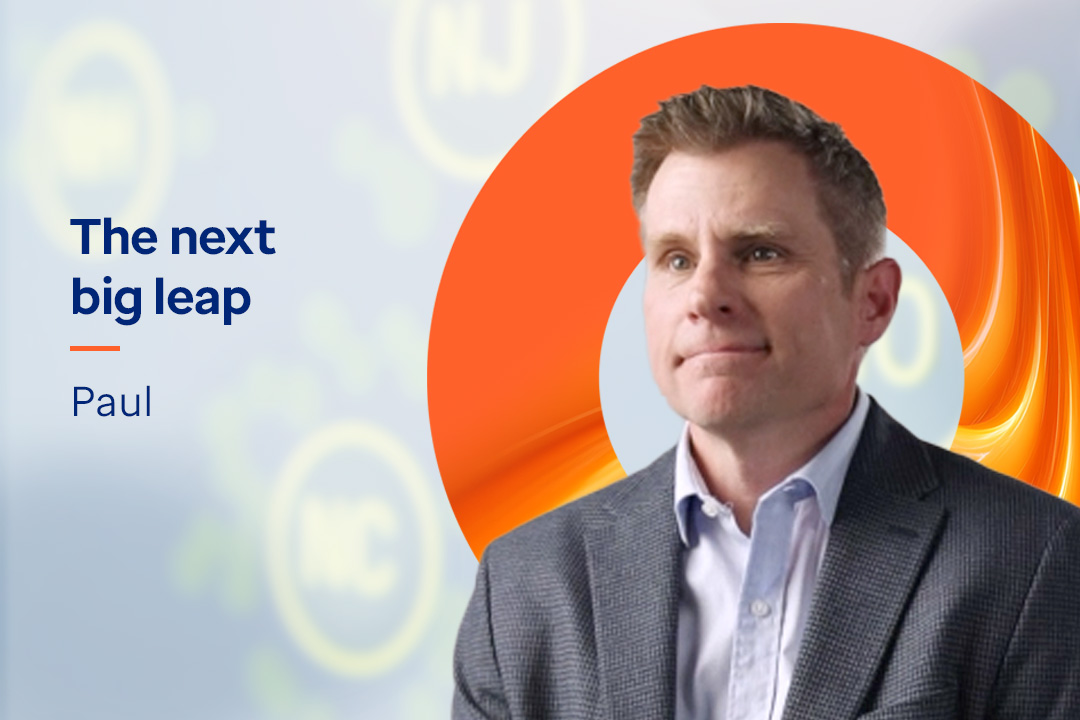
Video
Helping to eliminate preventable denials
84% of claim denials are preventable. Learn how Optum is helping to improve payment integrity by facilitating interoperability between health plan and provider systems.
[MUSIC PLAYING IN THE BACKGROUND THROUGHOUT THE VIDEO]
[VIDEO, Paul Root walking through the office]
[Text on Screen – The next big step]
PAUL ROOT: I think we're at an inflection point within the health care system.
[VIDEO, showing the Optum logo on the office wall, transiting to showing Paul Root working at his laptop, with a dual screen showing people analyzing data]
With modern advancements in technology, connectivity, we're going to be able to make the next big leap, which is going to take costs out of the health care system, by getting rid of administrative waste and errors.
[VIDEO, Paul Root situating himself on a chair in front of a white screen, with a production clap board indicating the beginning of shooting]
My name's Paul Root, and I lead the payer administration product team within Optum Insight.
[Text on Screen – Paul Root, SVP, Payer Administration Product]
The problem with claim denials is it creates friction in the claim process. As claims are submitted from physicians, health systems, to health plans, every health plan has a process where they evaluate those claims to make sure they're coded correctly, that they are billed in accordance with the payer's payment policy. Oftentimes, that results in a denial, which is a claim that then is sent back to the provider that they have to do something with. Now they have to recheck it. They have to research what was wrong. They have to try to fix the claim and resubmit. So we get into this sort of back and forth and we're trying to avoid the back and forth. At Optum, we're creating connections between the payer and the provider. We're integrating into the provider's EHR and into the payer's adjudication system. And we're able to share information that's required for an accurate claim upfront, in the provider's workflow, as they're coding that claim, to avoid denials in the long run. If we can just connect the dots, if we can create connectivity using AI and analytics, we can remove waste from the health care system. And that's really what we're trying to do.
[Text on Screen – Creating connections, Always innovating]
[LOGO, Optum]

Video
Helping create a seamless durable medical equipment experience
Discover how a digital-first DME strategy can help improve efficiency and transparency for health plans, clinicians and members.
[UPBEAT MUSIC]
[A woman in an office suite climbs up a flight of stairs.]
On-screen text: Making healthcare work better for everyone.
[The woman walks along a wall with a big, white “Optum” logo on an orange background. Two split screens in succession, one with her hands typing on the keyboard of a laptop and the screen showing her options, and the other with her at a desk typing on her laptop and in low-light, her hands in profile, typing.]
TANYA: My team and I think of ways that we can modernize and make healthcare work better for everyone.
[On the left, the screen is split into two halves, in the top one a clapperboard in front of Tanya’s face, and in the bottom one, Tanya smiles in profile. On the right, Tanya sits in a chair, crosses her legs and smiles, against a grey background.]
TANYA: I'm Tanya Hendrickson, I'm a Senior Product Director at Optum.
[Close-up and middle-close up of Tanya alternate against the grey background.]
On-screen text: Tanya Hendrickson. Senior Product Director, Optum.
TANYA: Everyone at some point is going to need durable medical equipment. Wheelchairs, oxygen, walkers, anything that a patient or member needs to make their life more comfortable. DME benefits today are fragmented, they are unreliable, and they are prone to, you know, errors and delays.
[The shots transition from a split screen with a middle close-up of Tanya sitting on the chair, and close-up of her face, as she speaks to alternating close-ups.]
TANYA: A clinician will use the fax machine or a phone call to refer out for durable medical equipment. We find, 70% or more of initial orders have incomplete documentation. So, we're fixing that by really modernizing a lot of these processes. One of the things that we're doing is we're pushing prior authorization into the actual ordering workflow. Secondly, we're ensuring compliance with health plans policies right in the e-prescribing platform. And finally, with the national network, we're ensuring that health plans are paying for the best, highest quality, durable medical equipment and at the right price. Our goal is to help members get what they need when they need it.
[The “O” of the Optum logo zooms in and shifts to the right and text appears inside it and to its left.]
On-screen text: Solving healthcare’s biggest challenges. Always innovating.
[The “O” of the Optum logo shrinks and shifts to the center to form the Optum logo.]
On-screen text: Optum.
[UPBEAT MUSIC PICKS UP AND THEN STOPS]
[End of transcript]
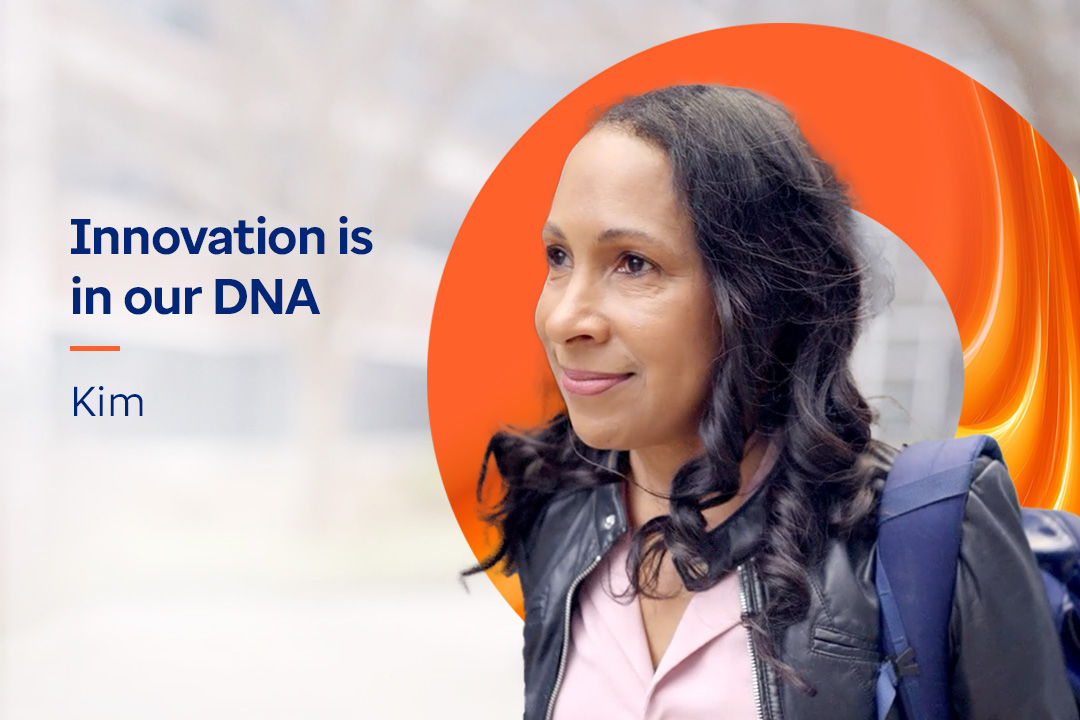
Video
Steadfast commitment to innovation
Kimberly Higgins Mays shares how over $8 billion in annual investments by Optum plus strong consultative relationships with health plans are helping clients improve their operations.
[MUSIC PLAYING IN THE BACKGROUND THROUGHOUT THE VIDEO]
[Text on Screen – Innovation is in our DNA]
[VIDEO, Kim Mays walking through an office campus, with split screens of computers displaying data]
KIMBERLY HIGGINS MAYS: It's not like you wake up tomorrow and you can solve health care's problems. No, it takes us all collaborating across the industry, bringing new ideas and leveraging the assets that we have to figure out how we can address it.
[VIDEO, Kim Mays taking a seat in front of a white screen, with a production clap board indicating the start of shooting a video]
And that is what we're doing, and that's what I'm excited about. My name is Kimberly Higgins Mays and I am the market president at Optum.
[KIM MAYS SPEAKING ON SCREEN]
[Text on Screen – Kimberly Higgins Mays, Payer Market President]
Innovation is, that's our DNA, that's who we are. There are many efforts that we're doing right now to advance innovation for health care. I would say one, enabling value-based care. We are helping to advance high-quality care at an affordable cost that helps improve health outcomes. We are working with health plan customers to help modernize their operations, such as AI and machine learning, to help health plan, end to end, in those core functions that they're doing every single day. We're doing it by managing their operations, managing regulatory pressures, helping them with IT or, oftentimes, helping them reduce some of the payment challenges that they're facing. We're also helping them with their membership, both existing members and new members, to grow that membership. And the way we do that is through looking at their benefit strategy. We can support them with how do we optimize that benefit strategy, because, really, that's what it's about. You want to be simple, you want to be affordable, and you want to be connected to those members. And that is what we do, every single day, at Optum.
[Text on Screen – Built on a foundation of innovation, Always innovating]
[LOGO, Optum]

Video
Driving innovation in risk adjustment
By bringing together leading expertise with advanced AI and machine learning capabilities, Optum advances innovative healthcare technology.
[MUSIC PLAYING IN THE BACKGROUND THROUGHOUT THE VIDEO]
[VIDEO, Eric Haseman walking through the lobby and hallways of an office building]
ERIC HASEMAN: The industry is accelerating, in terms of the needs, both of our customers and the broader marketplace. So it is forcing us to think differently about everything that we're doing.
[VIDEO, Eric Haseman walking onto a studio sound stage, sitting down on a stool to film his talk]
[Text On Screen Ð Eric Haseman, Senior Vice President and General. Manager, Risk and Quality]
My name is Eric Haseman. I'm responsible for risk adjustment product at Optum.
[VIDEO, production using a clapperboard to start filming Eric Haseman]
Risk adjustment is important for many reasons. How we ensure accurate and complete picture of a patient's health, but also how that information is then used to be able to improve how care is delivered and improve health overall. That's why it's important. At Optum, we've made intentional investments, both in terms of our capabilities, investing in those capabilities, if you will, but also investing in top talent, bringing in new experience, expertise to be able to accelerate our product roadmaps, kind of think differently about how our products work, how we collaborate with customers. The orchestration of all of this is key. Whether it's individual patients, individual providers, practices, entire health systems, it's crucial that we get that right. There's so much impact that we can have, both for our customers and for the industry overall. It's just incredibly exciting for me and for the team as a whole. I know that to be true.
[Text On Screen Ð Always innovating]
[ANIMATION, an orange ÒOÓ of the Optum logo, with wavy, fire-like animation displayed on it]
[LOGO: Optum]

Video
Improving outcomes with digital integration
Optum facilitates delivery of reliable evidence providers need to help improve patient care.
[Jaunty, pizzicato strings music plays in the background.]
On-screen text: Digital integration is our path.
[A suited arm carrying a briefcase is moving towards a blurred building.]
JEFF DUMCUM: Health plans can sit on top of a lot of data.
[We see Jeff DumcumÕs back as he walks towards the Optum building. An American flag flutters in the wind next to an Optum flag, on flagpoles.]
JEFF: We can harness that data to give insights, but we need to share them with the clinician.
[A hand opens the lid of a laptop. The screen transitions and we see the open laptop twice in a split screen, on the right Jeff is sitting behind the laptop.]
JEFF: Digital integration is our path to take those insights we have as Optum and give them to the provider at the time when they're sitting down across from a patient.
[Other boxes take up different sections of the split screen, showing the laptop and Jeff from different angles. The screen transitions and we see Jeff, in profile, walking slowly past a window. Jeff walks up a staircase and another split screen appears, showing him entering the filming space and sitting down on a leather-covered stool.]
JEFF: My name is Jeff Dumcum. I work in Optum Insights Risk and Quality product division.
[Two more split screen boxes appear, showing Jeff behind a sound clapper board and smiling, respectively. The screen transitions across to reveal a full screen image of Jeff, wearing a suit with no tie and jeans, speaking towards the camera.]
On-screen text: Jeff Dumcum. Product Vice President, Risk and Quality.
JEFF: When it comes to digital integration, Optum is unique in its scale and comprehensive approach.
[Jeff sits with his right leg folded on top of the left and talks to camera as he gestures with his hands.]
JEFF: Optum has strengths in various areas.
[Various shots of Jeff as he sits, talking to camera.]
JEFF: Optum is very strong at driving clinical insights, more connectivity with different EMRs than anybody else in the market.
[Jeff counts on his fingers as he lists the strengths, and gestures, expressively with his hands.]
JEFF: So not only do we have more insights, we can get those insights into the hands of the providersÊbecause our health system is fragmented.
[We see Jeff from two different angles in a split screen, before returning to the full screen, centered shot.]
JEFF: So, something that may have been treated by another provider, they may not be aware of, and the ability for us to share that is number one.
[We see a variety of shots of Jeff, including a close-up, as he continues talking and gesturing.]
JEFF: The second thing is, after they've seen the patient, we want to get clinical information back,Êand we want that to be as smooth and as efficient as possible, so we're not wasting a provider's time on administrative activities.
[We once again see an image of Jeff sitting on the stool, with elements of the filming space visible behind him, including the background screen.]
JEFF: And lastly, as we present the gaps, some gaps are best managed by a primary care physician and others are best routed to the specialist, so we can create logic of right information to the right provider.
[We see Jeff in another split screen, before returning to a full screen shot of him in front of the screen.]
JEFF: I'm excited because I can see the future as those insights move beyond risk adjustment and quality into other aspects of care, that we will continue to have a very significant impact on the health care system.
[An Orange letter O, with lighter shades of orange swirling across it like flowing paint, begins to transition on-screen from the edges, settling on the right-hand side.]
On-screen text: Always innovating.
[The swirling letter O becomes smaller and stops swirling, taking its place as the letter O of the Optum logo.]
On-screen text: Optum.

Video
Leveraging AI to identify clinical conditions
Learn how innovative healthcare technology informs an end-to-end risk adjustment workflow to help health plans and providers improve patient care.
[MUSIC PLAYING IN THE BACKGROUND THROUGHOUT THE VIDEO]
[Text On Screen Ð Turning challenges into possibilities]
[VIDEO, Arati Swadi walking through an office, through the lobby and down the stairs, transitioning to computer screens displaying data, and a person working on a laptop]
ARATI SWADI: I get to talk to the customers firsthand, understand the market firsthand, and then drive those problems into solution, by working with amazing technology and amazing teams, to bring it to fruition.
[VIDEO, Arati Sadi walking to a chair set up in front of a white screen, with the production team using a clapboard before shooting the scene]
I'm Arati Swadi. I work for Optum.
[Text On Screen Ð Arati Swadi, Vice President, Retrospective and Prospective Services]
I'm part of the risk adjustment and quality product management.
[ARATI SWADI SPEAKING ON SCREEN]
I conceptualize, drive product delivery in our product department. The healthcare industry has seen two main shifts. One is around the integrated payer and provider model, which is through the value-based care model, and the technological advancement. That is the shift that we are going to continue to see in the next decade. Optum is really at the forefront of technology innovations, through AI and EMR interoperability. We are connected to over 29,000 providers, which is unprecedented in the industry. That level of scale really helps us drive efficiency, that we have proven to be that trusted partner, with the payers and the providers, to provide these outcomes and results that are aligned with the customers over the period of time and will continue to do so through the innovations and the products that we bring in the future as well. Seeing it to fruition, through the results and the goals that we achieve for our customers, is very gratifying.
[Text On Screen Ð Every challenge is an opportunity for innovation, Always innovating]
[ANIMATION, the Optum ÒOÓ with the words ÒAlways innovatingÓ displayed inside of it]
[LOGO, Optum]

Video
Identify up to 5% more suspected clinical conditions
As part of our innovation in risk adjustment, AI can help identify clinical indications often missed by traditional methods, providing a more accurate picture of patient health.
[MUSIC PLAYING IN THE BACKGROUND THROUGHOUT THE VIDEO]
[Text on Screen – The need for innovation]
[VIDEO, Stephanie Gardner walking outdoors, down the street, over a bridge, transitioning to a split screen of a computer displaying data]
STEPHANIE GARDNER: Working in risk adjustment really excites me because it connects my passion for chronic condition management. It takes it out of the problem-focused nature of health care. Why are you here today? What are your symptoms? And really allows that full condition assessment.
[VIDEO, Stephanie Gardener walking onto a studio sound stage, sitting in front of a white screen, with production clap board preparing for start of shooting video]
[Text on Screen – Stephanie Gardener, Vice President, Market Solutions]
I'm Stephanie Gardner. I work with Optum's Risk Adjustment Market Solutions. With the introduction of V28, the market need for innovation is more critical than ever but ensuring full and accurate diagnosis coding is more complex. And that's just because there's a tremendous amount of data that's just overwhelming payers and providers. AI is helpful in that it really helps us go beyond some of the traditional programs that focused on structured data and allows us to dig into unstructured data that might exist in things like chart notes and to do the most comprehensive assessment possible for that patient. We couple the AI algorithm with certified coders, with clinical expertise, who review and validate the results of the AI. And by bringing those two together, we can see a 5 percent increase in net new suspects. And that's 5 percent of conditions that are existing that are impacting the treatment of these patients but were previously going undetected. It's really exciting to see innovative approaches to risk adjustment programs that can make a big difference in our healthcare payers, providers, and patients.
[Text on Screen – Innovation that makes a difference, Always innovating]
[LOGO, Optum]

Video
Quality innovation: A member-first approach to healthcare excellence
Learn how Optum uses a member-first digital approach, advanced analytics and AI to enhance quality for clients and health plan members.
[Music playing in the background throughout the video]
[A person walking, a close up of their legs and feet walking]
Text on Screen – Innovative and strategic solutions
[Video montage of Muthiulla Shariff Baseer walking to the Optum office building, people in a data center looking at a computer screen with data, Muthiulla Shariff Baseer setting up his laptop]
MUTHIULLA SHARIFF BASEER VOICEOVER: Having the ability to process data digitally allows the patients to get care in a very proactive manner.
[Muthiulla Shariff Baseer in front of a white screen, with a clapboard, positioning himself in front and preparing to talk and posing for the camera]
My name is Muthiulla Shariff Baseer and I lead the Quality and Member Engagement product team here at Optum.
Text on Screen – Muthiulla Shariff Baseer, Vice President of Product, Quality and Member Engagement
[MUTHIULLA SHARIFF BASEER SPEAKING ON SCREEN]
One of the biggest trends in quality happening is the digital transition. This digital trend has really enhanced and evolved the way we think, the way we act, and the way we provide to our members. The way we're doing this is taking an advanced analytic approach, providing insights, and catering to the needs of the member, leveraging AI. This is how Optum is a one-stop shop for quality. We at Optum have a unique partnership with NCQA as a part of their early adopter program. This allows us to go to market quicker and take advantage of our CQL engine to produce gaps in care quicker than anybody else in the market today. Optum's unique position, in terms of where we are placed, helps us understand what the market trends are, what the customer needs are, and come up with innovative and strategic solutions to help and make a difference in the members' life. That is one of the key reasons why I am excited to be here.
[Optum “O” animated, with words inside the “O”: Always innovating]
Text on Screen – Making a difference in members’ lives, Always innovating
[LOGO, Optum]

Video
Unlocking new possibilities in risk adjustment
Optum helps health plans improve risk adjustment performance by using data, AI and smart tech to enhance accuracy, efficiency and integration.
[MUSIC PLAYING IN THE BACKGROUND THROUGHOUT THE VIDEO]
[VIDEO, Eric Haseman walking through the lobby and hallways of an office building]
ERIC HASEMAN: The industry is accelerating, in terms of the needs, both of our customers and the broader marketplace. So it is forcing us to think differently about everything that we're doing.
[VIDEO, Eric Haseman walking onto a studio sound stage, sitting down on a stool to film his talk]
[Text On Screen Ð Eric Haseman, Senior Vice President and General. Manager, Risk and Quality]
My name is Eric Haseman. I'm responsible for risk adjustment product at Optum.
[VIDEO, production using a clapperboard to start filming Eric Haseman]
Risk adjustment is important for many reasons. How we ensure accurate and complete picture of a patient's health, but also how that information is then used to be able to improve how care is delivered and improve health overall. That's why it's important. At Optum, we've made intentional investments, both in terms of our capabilities, investing in those capabilities, if you will, but also investing in top talent, bringing in new experience, expertise to be able to accelerate our product roadmaps, kind of think differently about how our products work, how we collaborate with customers. The orchestration of all of this is key. Whether it's individual patients, individual providers, practices, entire health systems, it's crucial that we get that right. There's so much impact that we can have, both for our customers and for the industry overall. It's just incredibly exciting for me and for the team as a whole. I know that to be true.
[Text On Screen Ð Always innovating]
[ANIMATION, an orange ÒOÓ of the Optum logo, with wavy, fire-like animation displayed on it]
[LOGO: Optum]

Video
Leading the way in payment integrity
Imagine a world where every claim is paid accurately and on time, the first time. Optum is working hand-in-hand with health plans and providers to achieve this vision.
[MUSIC PLAYING IN THE BACKGROUND THROUGHOUT THE VIDEO]
[Text on Screen – Driven to innovate]
[VIDEO, Tisha Holden walking through an office lobby, with split screens of computers displaying data]
TISHA HOLDEN: Imagine a world where all claims are paid accurately, the first time, on time. That's a vision we have that not only drives what we do every day, but it's our mission.
[VIDEO, Tisha Holden taking a seat in front of a white screen, with a production clap board indicating the start of shooting a video]
I am Tisha Holden, and I am market president within Optum Insight for the West Region.
[TISHA HOLDEN SPEAKING ON SCREEN]
[Text on Screen – Tisha Holden, Payer Market President, West Region]
Providers often don't have the information they need or the connectivity they need to bill and code claims accurately. And traditional payment integrity interventions can create administrative burden and frustration for both providers and health plans. Optum is making this better by combining best-in-class solutions, like comprehensive payment integrity, with advanced technology, artificial intelligence, and expertise from thousands of clinicians to make the process even better. We are advancing payment integrity into the provider workflow, further streamlining the process, creating a real-time payment integrity intervention at the point of service. The key is transparency, which facilitates more communication, more efficiency, and effectiveness in the process. Members, providers, and health plans all benefit. Working with this incredible team, that wake up every day with the passion and the energy to make the health care system better for everyone, is what drives me every single day. We began this process and this journey over 25 years ago, and it's been so exciting to watch this team innovate, not only build the foundation that we're all working through today, but also build the future.
[Text on Screen – Making the health care system better for everyone, Always innovating]
[LOGO, Optum]

Video
Leveraging AI to help improve payment integrity
In a world where technology is advancing at a rapid pace, health plans are looking for examples of how to use AI to help solve their business needs. See how Optum is paving the way forward.
[MUSIC PLAYING IN THE BACKGROUND THROUGHOUT THE VIDEO]
[VIDEO, Bill Maly walking through an office skywalk, with a split screen of computer screen displaying, “Health Activation Index” and an individual looking at data on a computer screen]
[Text on Screen – Innovation comes naturally]
BILL MALY VOICEOVER: Health plans are really trying to identify examples of how AI can help them solve their business needs. Ultimately, if you can find the root cause and the problem, the innovation comes naturally.
[VIDEO, Bill Maly taking a seat in front of a white screen on a production set]
I'm Bill Maly. I work in our Payment Integrity business here at Optum.
[VIDEO, production clapboard being snapped]
[BILL MALY SPEAKING ON SCREEN]
[Text on Screen – Bill Maly, Senior Vice President, Payment Integrity]
The interesting thing about technology and the value that we find is when you can bring in both that health care expertise, together with the advanced technology, to build very powerful solutions. Sometimes a standard rule or an edit will do the job. But there are areas of payment integrity where AI can add value, and that's really around areas of driving operational efficiencies and reducing provider abrasion.
[VIDEO, a close up of Bill Maly’s hands, as he speaks] Optum has been using AI in our solutions for more than a decade. Currently, we evaluate millions of claims per day running through our AI algorithms and models.
[VIDEO, a split screen of Bill Maly speaking from different angles]
Over those many years, billions of claims have been evaluated, and that has allowed us to improve the accuracy of our detection, detecting claims that, ultimately, edits and rules can't. Another great opportunity for AI is really in workflow prioritization. So once we identify a claim that needs human review, we prioritize that through our AI models to route the claims to the most experienced reviewers. So seeing what this technology is capable of, and knowing some of the problems that our health plans are facing, really gets me excited about what we can bring.
[MUSIC GETTING LOUDER]
[Text on Screen – Building powerful solutions, Always innovating]
[ANIMATION, an orange Optum “O” with the words, “Always innovating”]
[LOGO, Optum]

Video
Streamlining payment accuracy with machine learning
Provider contracts contain essential information for accurate reimbursement. Learn how Optum technology extracts and digitizes this data, helping to make it easily accessible.
[CLASSICAL CELLO MUSIC]
[The corridor of an office with transparent and translucent walls on either side of it that look into meeting rooms. Laika Kayani walks towards the camera from the far end of the corridor.]
On-screen text: Precipice of change.
[Close up of her legs as she walks.]
LAIKA KAYANI: I love what I'm doing here at Optum,
[She gives her back to an open floor with office cubicles against a windowed wall and walks to exit.]
because we are at a precipice of
[She walks alongside a front desk, above which the Optum logo hangs on the wall.]
change in the healthcare industry.
[Close-up of her face in profile as she walks.]
Technology is evolving.
We have large language models
[In the foreground, a screen shows stock market information. Laika walks in a room with chairs and tables in the background.]
and AI really changing the
[Split screen with Laika walking on the left and on the right, two people in front of a laptop with an orange screen, against a bigger screen with a blue background, dots arranged in a circle in the middle and on the left-hand side, the outline of the shape of a country.]
way healthcare gets delivered
[Close-up of the face of Laika in profile, as she keeps walking.]
and how decisions get made.
[Split screen with Laika’s face in profile on the left and on the right, her sitting down on a chair on the interview set, against a white backdrop. The left screen splits in two halves. On the top half, a sound clapper in front of her face and on the bottom half a close-up of her face, as she smiles.]
My name is Lika Kayani
[Laika from the waist up.]
and I lead the product team
[The orange “O” from the Optum logo appears at the bottom of the screen in the center, sliding left to reveal a white text box.]
On-screen text: Laika Kayani – Vice President, Payment Integrity Product.
for Payment Integrity services.
[Close-up of Laika’s face.]
The problem with contracts within health plans today is contracts are: one, in different formats.
[Laika from the waist up.]
Two, they're in disparate systems, and being able to extract
[Split screen with Laika on the left sitting on a chair on the set, and a close-up of her face on the right.]
information for the sake of paying a claim correctly is very difficult.
[Laika from the waist up.]
I'm really excited about what Optum’s doing.
[Close-up of Laika’s face.]
Optum is helping payers digitize their contracts using large language models
[Laika from the waist up.]
and extracting meaningful information
[Close-up of Laika’s face.]
into machine readable format.
[Laika sitting on a chair on the set, against the white backdrop.]
We're also using digitized contracts to build
[Laika from the waist up.]
AI-enabled augmentation tools for our reviewers to help them
[Close-up of Laika’s face.]
in their decision making when they're reviewing contract-based error claims.
[Laika from the waist up.]
The digitized information
[Split screen with close-up of Laika’s face on the left and her on the right, sitting on a chair on the set, against the white backdrop.]
helps reviewers drive more accurate decision making and pay claims more accurately.
[Laika sitting on a chair on the set, against the white backdrop.]
We are at a point in our healthcare journey
[Laika from the waist up.]
where change
[Close-up of Laika’s face.]
is happening pretty rapidly,
[Laika from the waist up.]
and to be able to influence where healthcare is going is really powerful, so I'm excited to be on this journey.
[The “O” of the Optum logo closes in from the edge of the screen, coming to rest on the right-hand side. Text appears in the middle of the “O.”]
On-screen text: Always innovating.
[Text appears to the left of the “O.”]
On-screen text: Changing the way healthcare gets delivered.
[All the text disappears, the “O” shrinks and forms the Optum logo.]
On-screen text: Optum.
[JAUNTY PIZZICATO MUSIC]
[MUSIC ENDS]

Video
Transforming the healthcare experience
Real-time coordination of benefits solutions from Optum help providers see a comprehensive view of patient coverage and facilitate submission of claims to the correct payer the first time.
[MUSIC PLAYING IN THE BACKGROUND THROUGHOUT THE VIDEO]
[Text on Screen – Innovation is in our DNA]
[VIDEO, Laika Kayani walking through an Optum office building, with split screens of computers displaying data]
LAIKA KAYANI VOICEOVER: I love that I could make an impact in this industry. I want to leave health care better for my children and better than I found it.
[VIDEO, Laika Kayani taking a seat in front of a white screen, with a production clap board indicating the start of shooting a video]
[Text on Screen – Laika Kayani, Vice President, Payment Integrity Product]
I'm Laika Kayani and I lead product for payment integrity services at Optum. There are tens of millions of people across the US who have multiple sources of coverage. However, when a patient shows up to the provider office, they present one form of coverage, but the provider does not have a holistic view of their coverage end to end. This leads to incorrect payments of roughly 150 million claims a year. It also leads to delays in payments by about 270 days. What's great about what Optum's doing is they're providing a solution, it's called Real-Time Coordination and Benefit Solution, that sits squarely in the provider's workload. So when a patient shows up with one health plan card or a policy card, the provider can quickly check for a secondary form of coverage so that downstream, when the provider is getting ready to submit a claim, they're submitting that claim to the correct health plan. It will fix the problem right at its source. At Optum, we really think about the payer-provider relationship. The opportunity that we have here is to really transform that experience for everybody involved.
[Text on Screen – Leaving health care better than we found it, Always innovating]
[LOGO, Optum]

Video
Helping to eliminate preventable denials
84% of claim denials are preventable. Learn how Optum is helping to improve payment integrity by facilitating interoperability between health plan and provider systems.
[MUSIC PLAYING IN THE BACKGROUND THROUGHOUT THE VIDEO]
[VIDEO, Paul Root walking through the office]
[Text on Screen – The next big step]
PAUL ROOT: I think we're at an inflection point within the health care system.
[VIDEO, showing the Optum logo on the office wall, transiting to showing Paul Root working at his laptop, with a dual screen showing people analyzing data]
With modern advancements in technology, connectivity, we're going to be able to make the next big leap, which is going to take costs out of the health care system, by getting rid of administrative waste and errors.
[VIDEO, Paul Root situating himself on a chair in front of a white screen, with a production clap board indicating the beginning of shooting]
My name's Paul Root, and I lead the payer administration product team within Optum Insight.
[Text on Screen – Paul Root, SVP, Payer Administration Product]
The problem with claim denials is it creates friction in the claim process. As claims are submitted from physicians, health systems, to health plans, every health plan has a process where they evaluate those claims to make sure they're coded correctly, that they are billed in accordance with the payer's payment policy. Oftentimes, that results in a denial, which is a claim that then is sent back to the provider that they have to do something with. Now they have to recheck it. They have to research what was wrong. They have to try to fix the claim and resubmit. So we get into this sort of back and forth and we're trying to avoid the back and forth. At Optum, we're creating connections between the payer and the provider. We're integrating into the provider's EHR and into the payer's adjudication system. And we're able to share information that's required for an accurate claim upfront, in the provider's workflow, as they're coding that claim, to avoid denials in the long run. If we can just connect the dots, if we can create connectivity using AI and analytics, we can remove waste from the health care system. And that's really what we're trying to do.
[Text on Screen – Creating connections, Always innovating]
[LOGO, Optum]

Video
Helping create a seamless durable medical equipment experience
Discover how a digital-first DME strategy can help improve efficiency and transparency for health plans, clinicians and members.
[UPBEAT MUSIC]
[A woman in an office suite climbs up a flight of stairs.]
On-screen text: Making healthcare work better for everyone.
[The woman walks along a wall with a big, white “Optum” logo on an orange background. Two split screens in succession, one with her hands typing on the keyboard of a laptop and the screen showing her options, and the other with her at a desk typing on her laptop and in low-light, her hands in profile, typing.]
TANYA: My team and I think of ways that we can modernize and make healthcare work better for everyone.
[On the left, the screen is split into two halves, in the top one a clapperboard in front of Tanya’s face, and in the bottom one, Tanya smiles in profile. On the right, Tanya sits in a chair, crosses her legs and smiles, against a grey background.]
TANYA: I'm Tanya Hendrickson, I'm a Senior Product Director at Optum.
[Close-up and middle-close up of Tanya alternate against the grey background.]
On-screen text: Tanya Hendrickson. Senior Product Director, Optum.
TANYA: Everyone at some point is going to need durable medical equipment. Wheelchairs, oxygen, walkers, anything that a patient or member needs to make their life more comfortable. DME benefits today are fragmented, they are unreliable, and they are prone to, you know, errors and delays.
[The shots transition from a split screen with a middle close-up of Tanya sitting on the chair, and close-up of her face, as she speaks to alternating close-ups.]
TANYA: A clinician will use the fax machine or a phone call to refer out for durable medical equipment. We find, 70% or more of initial orders have incomplete documentation. So, we're fixing that by really modernizing a lot of these processes. One of the things that we're doing is we're pushing prior authorization into the actual ordering workflow. Secondly, we're ensuring compliance with health plans policies right in the e-prescribing platform. And finally, with the national network, we're ensuring that health plans are paying for the best, highest quality, durable medical equipment and at the right price. Our goal is to help members get what they need when they need it.
[The “O” of the Optum logo zooms in and shifts to the right and text appears inside it and to its left.]
On-screen text: Solving healthcare’s biggest challenges. Always innovating.
[The “O” of the Optum logo shrinks and shifts to the center to form the Optum logo.]
On-screen text: Optum.
[UPBEAT MUSIC PICKS UP AND THEN STOPS]
[End of transcript]

Video
Steadfast commitment to innovation
Kimberly Higgins Mays shares how over $8 billion in annual investments by Optum plus strong consultative relationships with health plans are helping clients improve their operations.
[MUSIC PLAYING IN THE BACKGROUND THROUGHOUT THE VIDEO]
[Text on Screen – Innovation is in our DNA]
[VIDEO, Kim Mays walking through an office campus, with split screens of computers displaying data]
KIMBERLY HIGGINS MAYS: It's not like you wake up tomorrow and you can solve health care's problems. No, it takes us all collaborating across the industry, bringing new ideas and leveraging the assets that we have to figure out how we can address it.
[VIDEO, Kim Mays taking a seat in front of a white screen, with a production clap board indicating the start of shooting a video]
And that is what we're doing, and that's what I'm excited about. My name is Kimberly Higgins Mays and I am the market president at Optum.
[KIM MAYS SPEAKING ON SCREEN]
[Text on Screen – Kimberly Higgins Mays, Payer Market President]
Innovation is, that's our DNA, that's who we are. There are many efforts that we're doing right now to advance innovation for health care. I would say one, enabling value-based care. We are helping to advance high-quality care at an affordable cost that helps improve health outcomes. We are working with health plan customers to help modernize their operations, such as AI and machine learning, to help health plan, end to end, in those core functions that they're doing every single day. We're doing it by managing their operations, managing regulatory pressures, helping them with IT or, oftentimes, helping them reduce some of the payment challenges that they're facing. We're also helping them with their membership, both existing members and new members, to grow that membership. And the way we do that is through looking at their benefit strategy. We can support them with how do we optimize that benefit strategy, because, really, that's what it's about. You want to be simple, you want to be affordable, and you want to be connected to those members. And that is what we do, every single day, at Optum.
[Text on Screen – Built on a foundation of innovation, Always innovating]
[LOGO, Optum]
